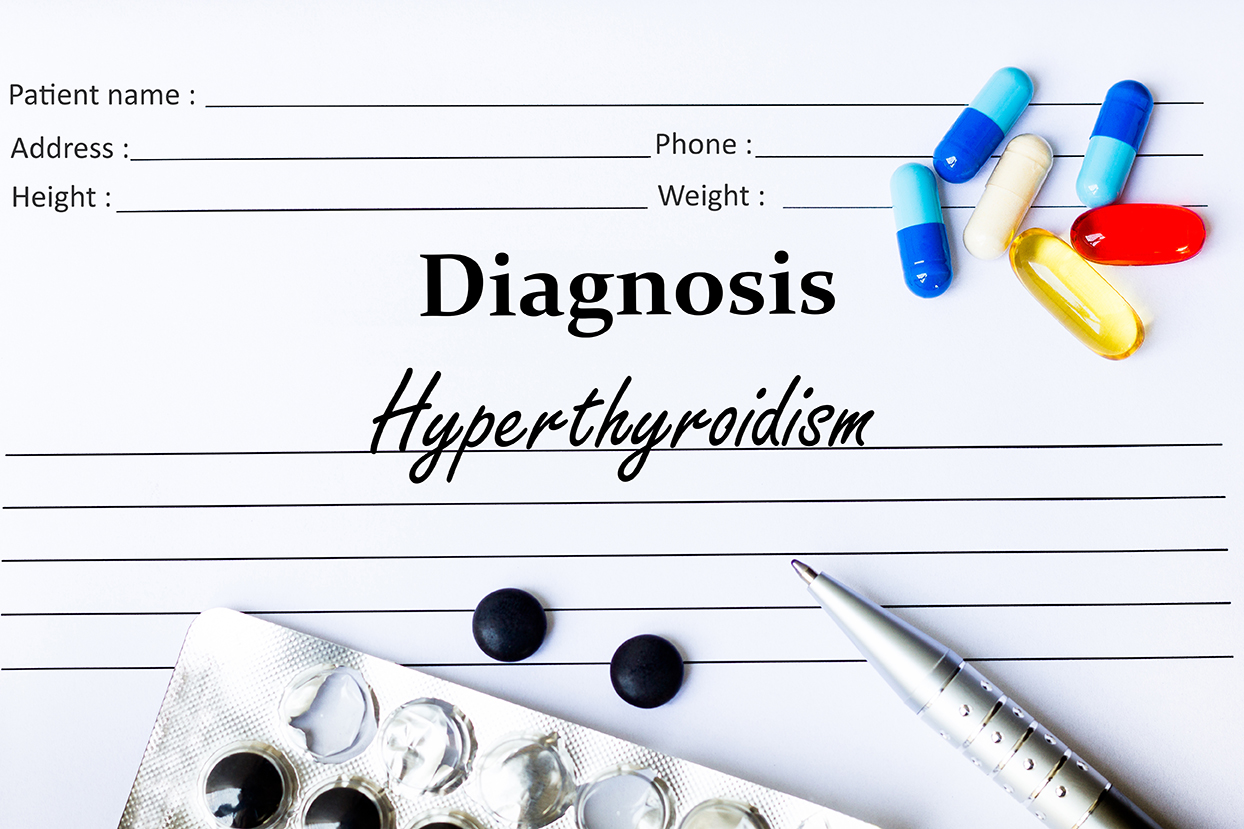Overactive thyroid glands may not always show up in the form of symptoms. In some of the cases, hyperthyroidism can remain asymptomatic; however, in some cases it aggravates to a condition called thyroid storm, which requires hospitalization. In order to confirm the presence of overactive thyroid activity, one needs to undergo certain diagnostic tests. Upon confirmation, treatment is provided by an endocrinologist.
In most cases, due to the influence of the thyroid hormones on the adrenergic system (a part of the autonomic nervous system), people with overactive thyroid glands tend to experience:
- Heart palpitations
- Excessive hunger
- Increased bowel movements
- Intolerance to heat
- Unusually high amounts of sweating
- Tremors in hands
- Fixed stare due to retraction of eyelids
Once a person starts to experience such symptoms, general practitioners advise a consultation with endocrinologist. The endocrinologist takes into account the complete family history, past medical history, and other factors to ascertain the presence of hyperthyroidism. Apart from that, the person experiencing overactive thyroid symptoms is advised to undergo certain diagnostic tests in order to confirm the diagnosis of hyperthyroidism.
Diagnostic tests for hyperthyroidism
Thyroid function test with TSH level, total T3, & Free T4 levels. These tests are done by drawing blood samples and testing for the amounts of thyroid hormones and TSH levels present in the bloodstream. However, diagnosing hyperthyroidism and the cause of it is dependent upon the relative levels of TSH, total T4, Free T4, and total T3.
Diagnosis of hyperthyroidism based on thyroid function test findings
Depending upon the specific levels of TSH, free T4, and total T3, the patient is asked to go for further diagnostic tests to ascertain the underlying causes for the symptoms of overactive thyroid glands.
Scenarios that can occur with the thyroid function test
- Low levels of TSH with normal or higher levels of total T3 and Free T 4 – People with thyroid function test results in this pattern are suggested to take up an additional diagnostic test called radioactive uptake test along with a thyroid gland scan.
- High TSH levels with high total T3 and Free T4 – People with the results of thyroid function test in this pattern are advised to undergo other tests for pituitary adenoma.
Radioactive iodine uptake test
This test is done for people who have low TSH levels and normal or higher levels of total T3 and Free T4. This test is done in conjunction with a thyroid scan in order to detect the underlying causes for the symptoms of an overactive thyroid.
In this test, the patient is given a radioisotope of iodine (Iodine 123) to be swallowed. Generally, the formulation is sodium iodide and is consumed in the form of fluid or a capsule.
Once the patient consumes this radioactive iodine, the amount of absorption of the iodine (uptake) becomes the indicator for the presence of any thyroid disease.
The normal range of radioactive iodine uptake is around 15% to 25% in a span of 24 hours. However, patients with Graves’ disease, toxic multinodular goiter, and toxic adenoma of the thyroid glands have higher levels of radioactive iodine uptake.
On the other hand, people with thyroiditis due to various causes have lower levels of radioactive iodine absorption. The absorption pattern of the radioactive iodine is visualized in a thyroid scan. Single place or scattered iodine absorption is an indicator of various thyroid disorders.
Types of Hyperthyroidism diagnosed in a thyroid function test
| TSH Level | Total T3 | Total T4 | Free T4 | Condition |
| Suppressed | High | High | High | Overt hyperthyroidism |
| Low | Normal | Normal | Normal | Subclinical hyperthyroidism |
| Normal or high | High | High | High | Pituitary adenoma |
| Normal | High | High | Normal | Presence of excess estrogen |












